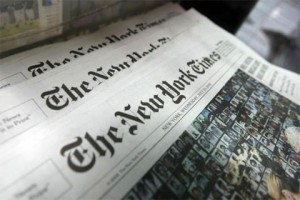 Of course you’re looking for the best romances out there. You don’t want to read crap, afterall. But there’s some very good reasons why using best-seller lists, “top author”, “Best of,” “most popular” and other similar listings of books is the worst way of finding the best romances to read.
Of course you’re looking for the best romances out there. You don’t want to read crap, afterall. But there’s some very good reasons why using best-seller lists, “top author”, “Best of,” “most popular” and other similar listings of books is the worst way of finding the best romances to read.
The traffic stats on my blog also report on search terms people use to find me, and a good portion of those search terms show me that many readers are doing exactly this: searching for the “best of,” and best sellers, top authors, and other means of finding what they think will be the wheat amongst a lot of chaff and drek out there.
If you try to find romance novels this way, you will miss out on a lot of great stories and authors.
Here’s why:
Best Seller lists are exclusive, not inclusive
There is no single best seller list anywhere that includes every romance novel ever written, across all time.
Even that most holy of holies, the New York Times (NYT) Best Seller List, doesn’t include Harlequin/Silhouette category romances (which regularly outsell the #1 on their list each month). And up until last year, it didn’t include e-books. It still doesn’t include indie-published books.
Amazon, which sells close to 99% of every romance ever published, has a best-seller list…but that list still only covers the books they sell, not every romance out there. And that best-seller list is skewed because of time — more on the time factor in a minute.
Any best-seller list you come across will only include titles for that publisher, review site, bookseller, or site. Whatever list you’re looking at will be limited in some way. It will exclude titles from its list. Therefore, it isn’t a true representation of “best”.
And then there is the time factor.
Best seller lists don’t factor in time
Most best-seller lists decide what is a best-seller based on some sort of limiting time period.
The NYT Best Seller List covers the previous month, for example. They will only look at sales across a one month period. Therefore a book that sells 20,000 copies in that one month period may end up being the #1 title for the month, even though it never sells another copy. Yet a book that sells 5,000 copies every month for a year, for a total of 60,000 copies in a single year, may never reach the top ten best-sellers list at all — yet it has outsold the #1 title three times over!
This distortion of what is really a best-seller is only going to get worse in the next few years, because e-books stay on the virtual shelf forever, and keep selling month after month, after month, unlike the old paperback system where the book was on the bookstore shelf for a month and then was gone, already a distant memory, as the bookstore made room for new titles.
“Best-of” and “top” lists are subjective
Most “best of” and “top” listings are purely arbitrary. They’re pulled together based on one or two readers’ or editors’ opinions on who the best authors are, or what the top titles of the year are. Consulting these lists and using them as a buying guide means you are assuming that your reading tastes are the same as the one or two people who built the lists. This is extremely unlikely and you’re probably going to be disappointed by some or most of their selections.
Researched lists are still limited
If the lists were built using some type of statistics — highest review ratings, most reader votes, etc., you’re back to the same limiting factors that best-seller lists face: the lists can’t possibly include every romance ever written, and they are most certainly limited by some sort of time factor.
What lists ARE good for
Lists of any sort are pretty useless as a buying guide. But they’re not totally beyond redemption. They are, afterall, lists. They’re a listing of romance titles. A limited listing, true, but you can scan the list to see if there are any titles or authors you’ve not heard of before, to add to your own personal list of titles and authors to research and check out before buying.
Just don’t let the fact that they’re on a best-seller or “best of” list influence your buying decision in any way. Their inclusion on that list is pure luck — the title happened to have sold just the right amount at the right time, or came to the right editor’s attention at the right time, to be included on that particular list…and that is all.
If you’re wondering how you’re supposed to figure out what books you should buy without the crutch of best-seller lists and best-of lists, then check out my series, A Toolkit And Compass for Romanceland. It will give you all the resources and tools you need to find the very best romances for you.
_________________